In “Futurama,” what are some hidden math and science references?
The critically-acclaimed animated Futurama (1999) was creator Matt Groening’s special geeky project born out of Fox’s desire for Groening to expand on the success of The Simpsons (1989) supply the network with another series. Set at the turn of the 31st century, Futurama’s content is heavily inspired by the areas of science, science fiction and mathematics. It depicts a world where the wheel is obsolete, the Internet controls everything, and cities like Los Angles and New York exist as hyper-realized versions of their present constructs.
The writers of Futurama filled the series with nerdy references from the realms of science and mathematics. Here are some of the best.
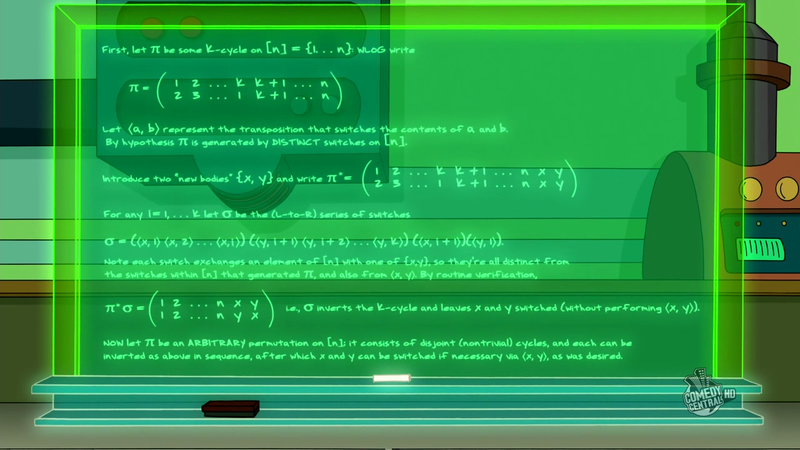
In “The Prisoner of Benda,” the episode puts forth The Futurama Theorem, a real-world concept developed by Futurama writer Ken Keeler (who holds a PhD in applied mathematics) solely for the episode. It is the first known theorem to be created entirely for the purposes of television entertainment, and, according to Keeler, was included with the noble purpose of popularizing math among young people.
In the episode, Professor Farnsworth (Billy West) builds a machine that can swap minds from two bodies, but those two bodies can never switch minds again. The question is, with the help of extra bodies, can they eventually restore everybody to their original state? The theorem proves that, regardless of how many mind switches between two bodies have been made, they can still all be restored to their original bodies using only two extra people, provided these two people have not had any mind switches prior (assuming two people cannot switch minds back with each other after their original switch).
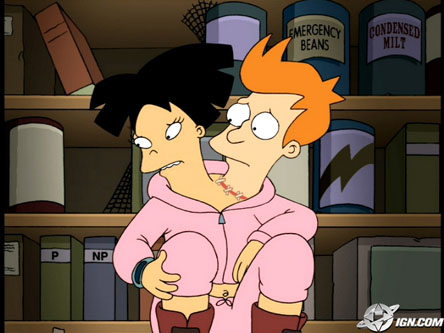
Other episodes reference well-known mathematical questions. In “Put Your Head on My Shoulders,” Amy (Lauren Tom) and Fry (Billy West) are hiding in a closet. Behind them are books labeled P and NP. The initials P and NP refer to a major unsolved mathematical problem described as asking “whether every problem whose solution can be quickly verified by a computer can also be quickly solved by a computer.” The problem has been examined since the 1960s when first written in a letter from Kurt Gödel to John von Neumann. Today, many consider this to be the most important open problem in computer science. It is one of the seven Millennium Prize Problems selected by the Clay Mathematics Institute to carry a $1,000,000 prize for the first correct solution.
See MIT’s in-depth explanation of the problem on their website.
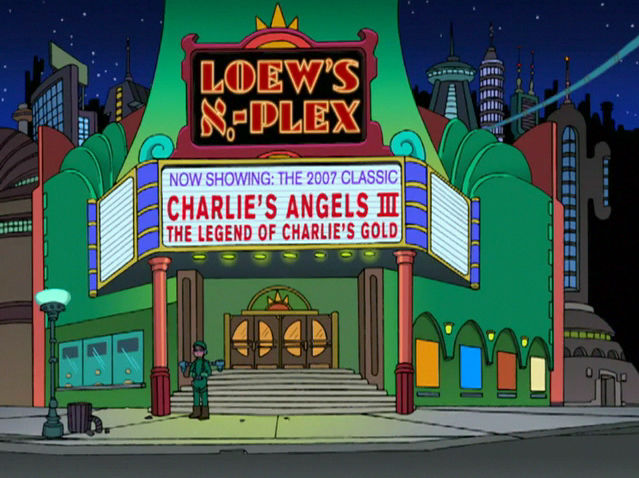
The Loew’s ℵ0-Plex Theater, first seen in “Raging Bender,” jokes about a theater with an infinite number of screens. Pronounced aleph-naught-plex, the aleph numbers refer to the sizes of different infinite sets. ℵ0 is a mathematical representation of the smallest infinite cardinal number. Mathematicians have proved that there are different scales of infinity, with ℵ0 being the smallest.
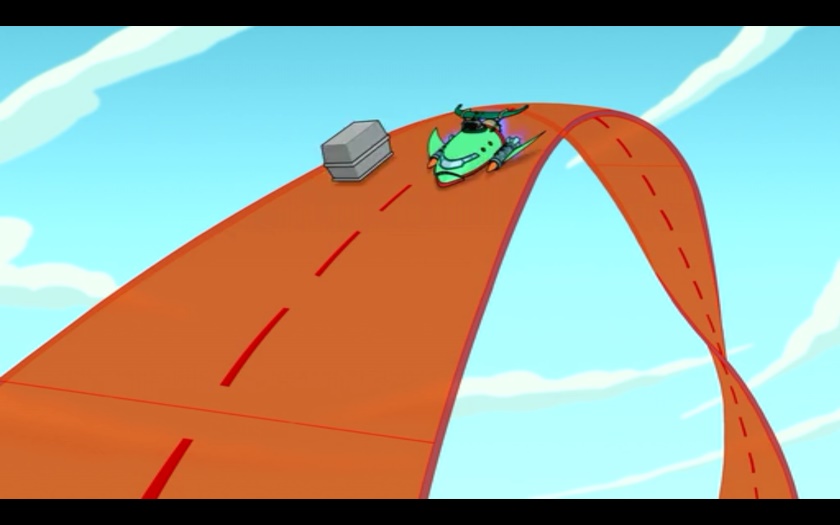
The Möbius Strip is a concept explored by Futurama on several occasions. The Professor uses it as a drag racing strip in “2D Blacktop.” A Möbius Strip is a non-orientable surface with only one side and one boundary.
A Möbius strip can be made with paper and tape by taking a paper strip, giving it a half-twist and then joining the ends of the strip together to form a loop. If an ant were to crawl along the length of the strip, it would return to its starting point having traversed the entire length of the strip (on both sides of the original paper) without ever crossing an edge.
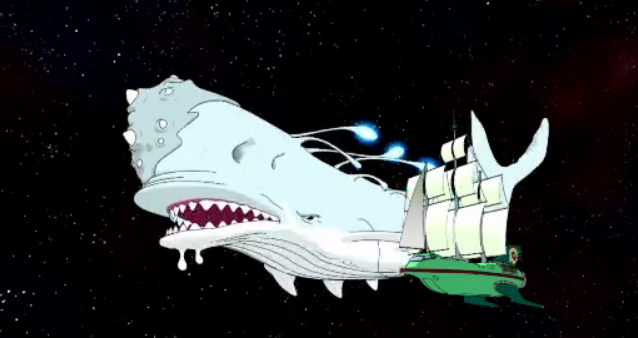
A short math joke exists that asks, “What’s non-orientable and lives in the ocean?” The answer, of course, is Möbius Dick. Futurama took the joke’s punchline and rendered a four-dimensional space whale in its episode of the same name.
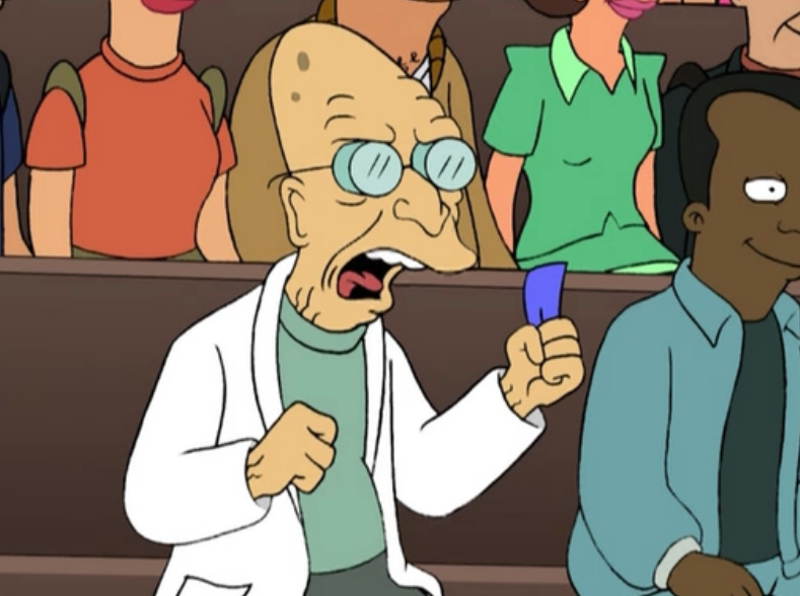
Farnsworth is upset in “The Luck of the Fryrish” when the horse track uses a “quantum finish” to determine the winner of the race. He shouts in protest that they changed the results of the race by measuring it. The “quantum finish” is about the observer effect. In science, the observer effect refers to changes that the act of observation will make on a phenomenon being observed. This is often the result of measuring instruments that alter the state of what they measure. For example, in experiments, particles will change how they behave depending on whether they’re being watched. Farnsworth argues that the fact people were watching the race changed the winner, and he is not pleased.
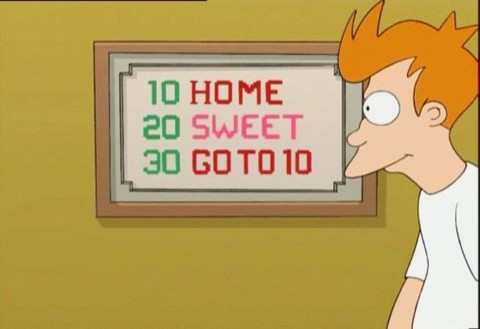
BASIC programming makes an appearance in “I, Robot” when Bender and Fry move into a new apartment. A sign on their wall reads “10 Home, 20 Sweet, 30 Go to 10,” which is a play on the classic phrase “Home Sweet Home.” In BASIC programming, each line of code is given a numeric indicator. When a certain line of code is reached containing a “GOTO” statement, the processing then continues at the line indicated. Thus, the third line of their sign references them back to the first, ultimately reading “Home Sweet Home.”
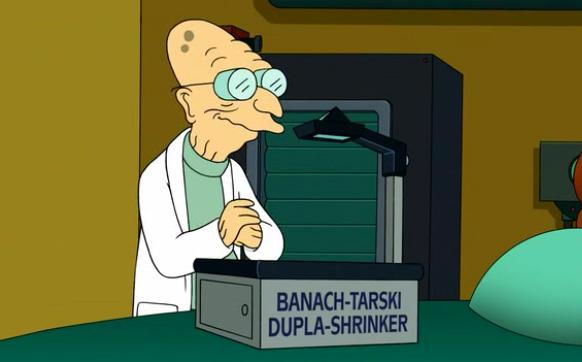
In “Benderama,” Farnsworth develops a machine that can copy an object into two smaller versions of itself. The machine reads “Banach-Tarski Dupla Shrinker,” a reference to the Banach Tarski theoretical paradox. The paradox is a complex theorem in set theory that says: given a solid ball in 3‑dimensional space, there exists a decomposition of the ball into a finite number of disjoint subsets, which can then be put back together in a different way to yield two identical copies of the original ball. The reassembly process involves only moving the pieces around and rotating them, without changing their shape. A stronger form of the theorem implies that given any two “reasonable” solid objects (such as a small ball and a huge ball), either one can be reassembled into the other. This is often stated informally as “a pea can be chopped up and reassembled into the Sun” and called the “pea and the Sun paradox.” It is a paradox because it contradicts the basic concepts of geometric volume.

Ready for a drink? “The Route of All Evil” shows a beer brand called Klein’s with an odd-shaped bottle. Like a Möbius Strip, a Klein Bottle is a non-orientable surface. Unlike a Möbius Strip, it has no boundary and a closed manifold, thus impossible to be embedded in three-dimensional Euclidean space. Here is a whole bunch of information about Klein Bottles.
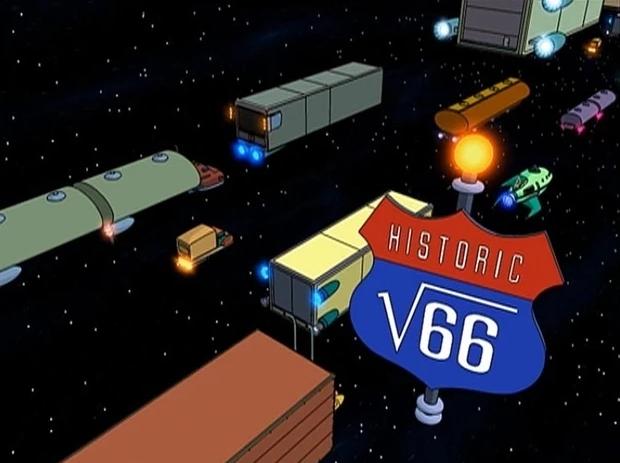
Simpler than all the above, Futurama loved basic numeric jokes. Sometimes based on science or math, sometimes simple puns, they ranged from the Square Root of 66 (a play on Route 66) sign (seen above) to Bender reading “1010011010” written in blood in a mirror’s reflection (translation: “666”). Many of the number jokes can pass over the viewer’s head without narrative consequence, making them primarily fun Easter eggs for those clever enough to catch them.
A few more examples:
- The registry number of the Nimbus is BP-1729. This is a tribute to Srinivasa Ramanujan, an Indian mathematician and autodidact, who observed that 1729 is the smallest number that is the sum of two positive cubes in two different ways. (1729 = 10^3 + 9^3 = 12^3 + 1^3.)
- 1729 is also Bender’s unit number, and the number of the universe Fry jumps out of in “The Farnsworth Parabox.”
- 87,539,319 appears as a taxicab number in “Bender’s Big Score,” a ridiculously long taxi number, and the smallest number that is the sum of two positive cubes in three different ways. The number is known in mathematics as the “taxicab number.” The story involves British mathematician G. H. Hardy in a taxicab traveling to visit Srinivasa Ramanujan in the hospital.
- In “Rebirth,” a building shows the sign “1²2¹3³,” or, Studio 54, a reference to the famous 1970s nightclub.
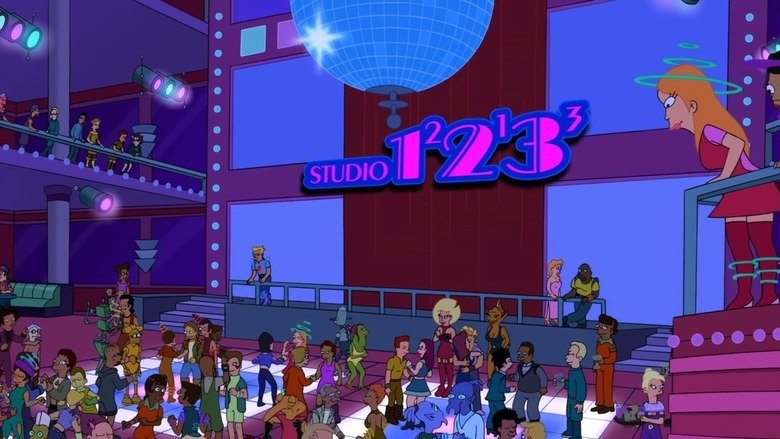
Futurama executive producer and head writer David X. Cohen said Futurama’s math jokes stemmed from two motivations: filling a need in freeze-frame comedy and inspiring people to get into complicated fields wherein they can make a difference on a grand scale. To Wired, he said, “We realized at first in The Simpsons, and later carrying on the tradition in Futurama, that we could hide these jokes in the background that were called freeze-frame jokes, because early on it was the beginning of the VCR era. It’s ancient history now, but people finally had a way to literally freeze-frame, and use freeze-frame jokes for the first time. So we decided to fill that niche, and we would not just waste a space in the background with a generic sign that said ‘Supermarket open 8am to 5pm’ or whatever, but we would put it, in Futurama for example, in an alien language that was a code, and a joke if you could decode it, that said ‘Human Meat for Sale, $5 a pound’, or something like that. So we tried to cash in on every bit of real estate in space and time in the show…
“We fire up interest in the new generation of viewers in these things that we like. Once in awhile I do have the thought, oh you know, if I’m spending my life making this cartoon show instead of doing some important academic research, I can still feel better about myself because if we make science and math interesting or cool in any way to a new generation of people, then I do feel a bit better about myself sometimes when we manage to do that.”
Futurama‘s math jokes are one of its many endearing qualities and a facet of the show’s construction that viewers love watching for. There is no shortage of the hidden touches, which give the series’ comedy a heightened sense of intelligence and lasting relevance.

